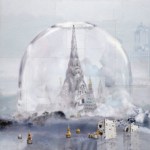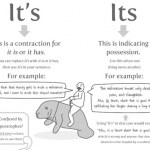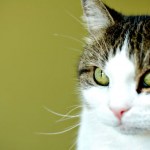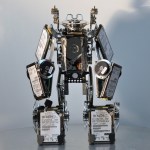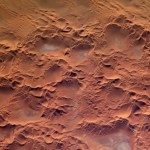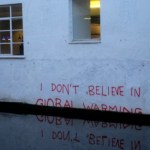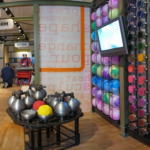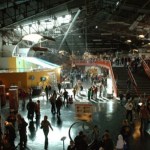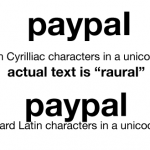
BioE readers: if you have a minute, take this quick five-question survey to let me know your thoughts on blog comments. Thanks!
The survey is now closed. Thanks!
A Cruel and Beautiful Far Away Place
Christopher Reiger
Vision Quest, "A Group Show of Neo-Shamanic Art," is opening at the Observatory in NYC this Saturday, January 16, at 7pm:
While the role of the shaman has traditionally been fulfilled by experienced elders in indigenous groups spanning culture and time, VISION QUEST posits that our artists fit the bill as well. Today, with more of us living in an urban jungle rather than a real one, it has become all the more important to figure out ways to internalize the lessons of nature: its growth, its brilliant bloom, its death. And in an age of…
As I've observed before, many scientists, especially physicists, seem to have a strong belief that the fundamental truths of nature are inherently elegant and beautiful. This new NPR story on symmetries fits right into that scientific-beauty-is-truth frame - down to the requisite Keats quote at the end:
The point here, as Tennant says, is that in the weird quantum world, under certain precise conditions, an order in nature emerges that was previously unknown. "When I started out I really expected that quantum systems would be somehow more complicated and somehow more confusing than the…
The Endangered Species Print Project has a clever approach to conservation: a series of limited-edition prints depicting endangered species, with the number of prints correlating with the number of individuals left in the wild. For this sunlight-saturated Panamanian Golden Frog by Jenny Kendler, that's a wild population/print run of only 100. All the proceeds from print sales go to Project Golden Frog. (For other species, proceeds go to a conservation group helping that particular species).
Artists Jenny Kendler and Molly Schafer created the project, and maintain a detailed blog on…
I like this little article by Sean Carroll for Edge:
I wanted to write that the Internet keeps people honest. The image of thousands of readers bursting into laughter gave me pause.
So let me put it this way: the Internet helps enable honesty. Many of us basically want to be honest, but we're fighting all sorts of other impulses -- the desire to appear clever or knowledgeable, to support a point we're trying to make, to feel the satisfaction of a rant well-ranted. In everyday conversation, when we know something specific about the expertise and inclinations of our audience, these impulses may…
Wonderful! Artist Chris Berens has a new show in NYC at the Sloan Gallery. Visit their website for much eerie eye candy. The show runs through Jan. 23.
Ten Words You Need to Stop Misspelling (detail)
view the whole thing at The Oatmeal - it's great.
While blogging late at night, I've sometimes wondered whether an extensive study of blog comments would yield a set of emergent categories, which could then be organized into a sort of phylogeny representing different species of blog commenter. I'm not referring to politics, academic discipline, or favorite ideological hobby horses: I'm talking about comment writing style and what you can infer from it, independent of a comment's content. For example, you have no doubt encountered Grammar Nazis…
It wasn't exactly a New Year's resolution, but Scibling Abel Pharmboy announced a new mission for Terra Sigillata this year:
Terra Sigillata will broaden its focus area to become an open platform for scientific and career development issues specific to underrepresented or underserved minority groups as described in the US by the National Institutes of Health: African Americans, Hispanic Americans, Native Americans/Alaska Natives who maintain tribal affiliation or community attachment, Hawaiian Natives and natives of the U.S. Pacific Islands, persons with disabilities, and underserved groups…
"Labyrinthine Meditation, Middle Stage"
Brian Knep, 2009
Brian Knep, an artist-in-residence at Harvard Medical School, just ended a solo exhibition at Boston's judi rotenberg gallery. Interestingly, the exhibition press release is unabashedly critical of science:
Through the scientific study of microscopic worms, Knep engages metaphysical questions of human behavior, the passage of time, and our inevitable transition to death. Knep's study of Caenorhabditis elegans, was inspired by the studies being conducted by scientists at the Harvard lab, specifically the study of aging, or the "…
Boston's fatorangecat studio has a wonderful blog where photographer Li Ward posts some of her most spontaneous work (like the time her furry subject got all tangled up with Cameron Diaz). Ranging from the absurd to the poignant, Li's photos capture what we love best about our pets. (I'm pretty sure the cats above are plotting our demise as a species for subjecting them to years of heinous indignity.)
I'm a kitten person, not a puppy person, but these photos are adorable!
Perhaps the most poignant of all Li's work is this candid shot of Kepler, an aging Weimeraner:
Looking at this photo…
Call to artists: ALCHEMY: Art and Science
Call to Artists at the Schiltkamp Gallery, Traina Center for the Arts, Clark University. This show will explore the intersections of art and science; art that is inspired by science or scientific images/models that are transcendent. The concept of "science" is open and may include new technology as well as the traditional sciences.
Application Instructions: 10-20 images in slides or as jpegs on a CD (no power point or slide shows). List of art work or other materials submitted, including titles, date, media, dimensions. C.V. or bio and a brief (one…
Miguel Rivera, a systems administrator at a U.S. Air Force base in Southwest Asia, builds robots and vehicles from the base's trashed hard drives:
"The overall concept was to make something out of just hard drive parts and pieces," says Rivera. "I wanted it to look solid and heavy so I leaned towards just using metal -- no plastic or gluing things together."
Via Wired. Thanks to John O for the heads up.
These photos from satellites and the international space station show how relatively featureless deserts form beautiful patterns when seen from above. Via Wired.
Beggar
Joao Ruas
Starting January 8, Thinkspace in Los Angeles is hosting a group exhibition to benefit wildlife conservation efforts:
Though we live in the city, animals exist all around us - they sleep in our beds, creep past our windows at night and visit us in our dreams. Symbolizing all that is free, unspoiled and elemental in the world, they also comfort us with guileless affection, amuse us with their playful abandon, and represent us metaphorically in a million works of art and literature. In every niche of the new contemporary scene, artists have employed animals to envisage…
Street artist Banksy thumbs his spraycan at global warming skeptics.
Via Londonist, via the ESPP blog.
I encourage everyone to read this thoughtful post by Janet, and contribute your thoughts.
Often, questions about online civility are dismissed with the comment "get a thicker skin" - as if it simply doesn't matter whether people address each other with respect online. I think it does matter. In the offline world, the "us/them" mentality fosters prejudice and misunderstanding - just turn on FoxNews. If that mentality also dominates the online world, turning it into a bunch of bickering echo chambers, we lose one of our best opportunities for constructive dialogue with people of other…
To follow up on my previous review of KC Cole's book about the Exploratorium, here's a nifty exhibit called "How People Make Things." It's a traveling exhibit (by the Children's Museum of Pittsburgh, not the Exploratorium) that demonstrates the basics of manufacturing processes like injection molding and assembly.
It's interesting to compare the experience you may imagine having in the exhibit room above to the experience of the website, which uses a one-directional lecture mode (warning: be prepared for the Mr. Rogers cameo). It's ironically difficult to successfully translate hands-on…
"the whole point of the Exploratorium is for people to feel they have the capacity to understand things." --Frank Oppenheimer
I admit it: I'd never heard of Frank Oppenheimer until I received my review copy of K.C. Cole's Something Incredibly Wonderful Happens: Frank Oppenheimer and the world he made up. I thought for a day or two that it was a book about Robert Oppenheimer, the so-called "Father of the Atomic Bomb," and was thus completely befuddled by the book's cheery title and its cover - a fanciful cloud of iridescent bubbles.
Of course, I was off by a sibling. Frank Oppenheimer was…
Oh noes! Chris Mooney just used the phrase "scientific consensus on global warming" in a WaPo article on Climategate:
While the controversy has receded, it may have done lasting damage to science's reputation: Last month, a Washington Post-ABC News poll found that 40 percent of Americans distrust what scientists say about the environment, a considerable increase from April 2007. Meanwhile, public belief in the science of global warming is in decline.
The central lesson of Climategate is not that climate science is corrupt. The leaked e-mails do nothing to disprove the scientific consensus on…
According to Christina Warren at mashable.com, the switch to allowing non-Latin alphabet characters in web domains could give scammers a brand new toolkit. That's because browsers can't render many non-Latin characters, and the approximations may be doppelgangers for trusted sites. Alternatively, an address in an alphabet like Cyrillic, which shares certain letterforms with the Latin alphabet, can appear indistinguishable from pre-existing Latin-alphabet addresses:
Uh-oh.
It's only fair that users of different alphabets get to register their own addresses, but clearly there needs to be some…



